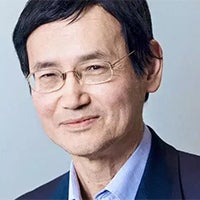This month saw what the President of the United States described as “the most deadly shooting in American history” with the killing of 49 innocent people at an Orlando nightclub, carried out by a man suspected of having leanings towards radical Islamist ideology.
Although information is still emerging, there are some clear threads and patterns, which link this attack to the increasing activity surrounding so-called Islamic State (IS).
1. Assaults Using an Automatic Rifle Becoming More Common
For somebody committed to terrorizing the population, there appears to be a growing tendency to use automatic weapons. Off-the-shelf military weapons are inherently more reliable than improvised explosive devices. In contrast to the atrocity in Orlando, a 2007 plot against the Tiger Tiger nightclub in London failed because the IED (improvised explosive device) failed to detonate.
2. The Increase in “Lone Wolf” Attacks as a Response to Surveillance
A “lone wolf” attack has been defined as a single individual or a group of two to three people driven to hateful actions based on a particular set of beliefs without a larger group’s knowledge or support. The FBI believes that most U.S. domestic attacks are carried out by lone actors to promote their own grievances and agendas.
Militants involved in such attacks are home-grown “self-starters” that are inspired by the jihadi movement, but may have little or no actual connection to these groups. Instead, many use the internet and social networking tools to find propaganda and research attack methods.
Mass interception of communications (as revealed by Edward Snowden’s leaks of National Security Agency files), particularly in North America, has raised the chances of terrorist conspiracies being detected. This has led to a move away from plots involving multiple attackers. There has been a corresponding rise in the United States in the risk of lone-actor attacks, which have a comparatively small chance of being found out and stopped.
3. Attacks Inspired by Islamic State
The Orlando terrorist contacted police via cellphone around the time of the attack to announce his allegiance to IS. There are strong indications that he has been deeply influenced by the group even if he had no contact with it. As IS concedes territory it controls in Iraq and Syria it is looking to organize or inspire atrocities overseas. There are two likely reasons for this. Firstly, striking on foreign soil helps to divert attention from its losses in the Middle East in order to retain credibility and an aura of potency. Second, the jihadi operations overseas are designed to deter further attacks by Western forces in IS strongholds in Iraq and Syria.
4. Targeting of Venues Which Extremists Claim Symbolize Values They Decry
Bars and nightclubs may feature in the attack plans of terrorist organizations because there are high concentrations of people in a public, accessible venue. Such locations are also targets for such extremists who may view them as representing Western lifestyles of which they disapprove.
5. Increased Attacks over Ramadan
The murders in Orlando happened a week after the start of the holy month of Ramadan. Radical Islamic militants tend to increase their operations during this period. A recording released online from IS spokesman Abu Mohammed al-Adnani has claimed any martyrdom operation during the festival of Ramadan will bring more “rewards.” An increase in the tempo of Islamist terrorist activity would thus not be unexpected.
The increasing proliferation of extremism and global attacks is concerning. Our modeling team closely monitors the evolving risk landscape. By examining all attacks to capture greater insight into the workings and thinking of the terrorist groups, including targeting preferences and weapon selection, we can continue to offer terrorism models that enable our clients to deepen their understanding of terrorism risk and strengthen their terrorism risk management.
This post was co-authored by Weimeng Yeo and Gordon Woo.






